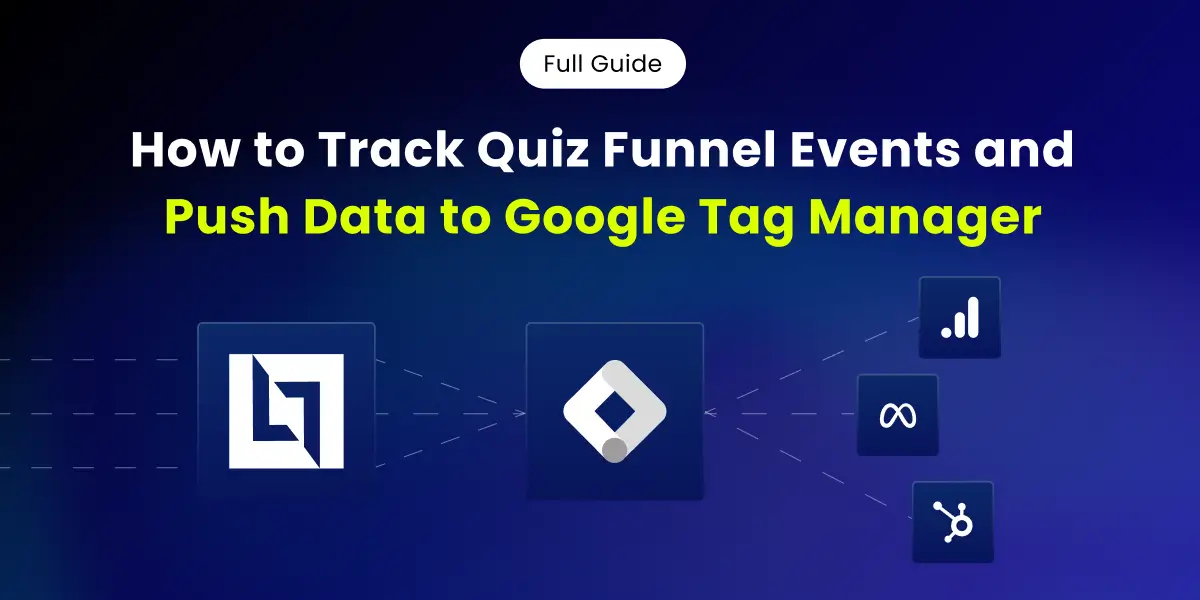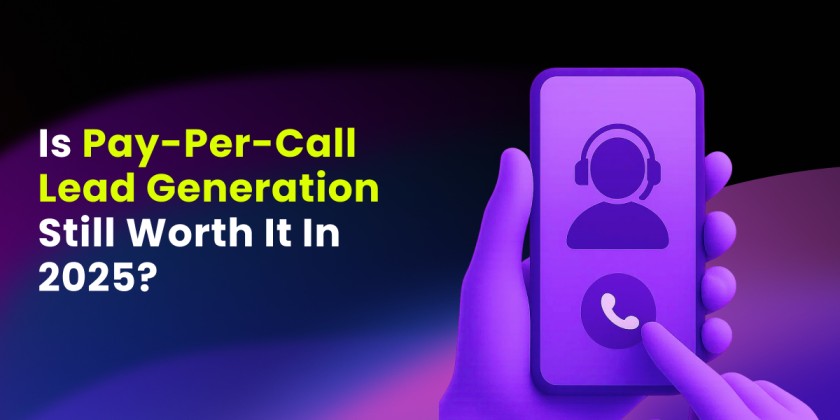Ever noticed how many businesses are using quizzes to connect with customers? These quiz funnels are everywhere these days. They’re catching on because they work: they get people interested, they gather useful info, and they point folks toward products that actually fit their needs.
As more businesses adopt this approach, it’s become a go-to tool for lead generation. However, many marketers wonder about one thing: what is the right number of quiz funnel questions to have?
This simple question has a not-so-simple answer that can make a big difference in your results. How do we achieve the perfect balance? That’s where we’ll help you out.
📖 What You’ll Learn in This Guide
- ✔ How to pick the best quiz length based on your business needs
- ✔ Psychological factors affecting quiz completion
- ✔ Question types and their impact on quiz length
- ✔ Best practices for any quiz length
- ✔ Quiz funnel questions examples
Jump to Section:
Why is the Number of Questions Important in Quiz Funnels
Every quiz funnel faces an inherent challenge: you need enough questions to gather valuable data about your leads, but ask too many and you risk losing those leads before they complete the quiz.
There’s this common mindset in the funnel game that shorter is always better. You’ve probably seen it or thought it yourself, looking at a quiz funnel and thinking, “Maybe we should just make it super short. Quick conversion, get them in, get them out.”
And look, it’s a fair thought. When your form converts well, it’s tempting to just leave it at that. But here’s the real question: what if we’re sacrificing quality for speed?
This balancing act is at the heart of successful quiz funnel design. You’re not just counting questions—you’re weighing the value of each interaction against the risk of quiz abandonment.
How Question Quantity Affects Completion Rates
The relationship between the number of quiz funnel questions and completion rates isn’t always straightforward. Some marketers have successfully run funnels with at least 30 questions while maintaining a 50% completion rate. That means half the people who started the quiz actually finished more than 30 questions!
This surprising example shows that just counting quiz funnel questions isn’t the only thing that affects completion rates. So why would a 30+ question funnel work when many marketers are afraid to ask more than 5 questions? It comes down to structure and psychology, not just numbers.
Key factors that influence quiz completion rates include:
- Question relevance to the user
- Perceived value of the results
- Question framing and psychological momentum
- Visibility of progress throughout the quiz
- Overall user experience and design
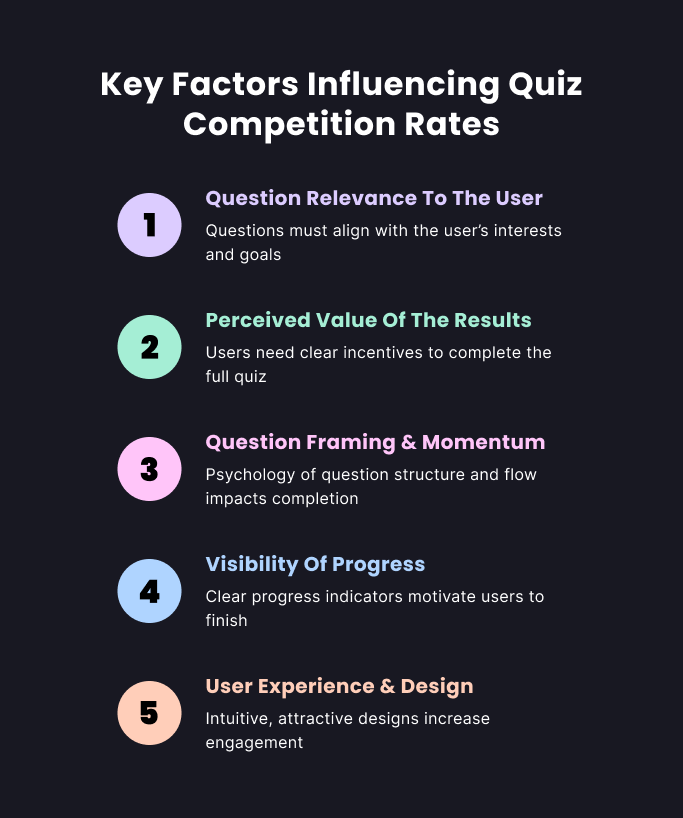
The Relationship Between Question Count and Lead Quality
While shorter quizzes might boost completion rates, they don’t always deliver the highest quality leads, especially if you’re not thinking strategically about how to qualify your leads.
The Bottom Line: Stop obsessing about question count.
Start obsessing about: Question framing, Value demonstration, Psychological momentum, Testing methodology.
More thoughtful, targeted questions can help you:
- Better segment your audience
- Understand buyer motivation more deeply
- Tailor follow-up marketing more effectively
- Deliver truly personalized recommendations that resonate
Why Finding the Perfect Balance Matters for Your Business
The optimal quiz length isn’t universal—it’s specific to your business, target audience, and goals.
Every time a quiz taker hits a question in your quiz funnel, they’re having this internal dialogue: “Why do they need to know this?” “What’s in it for me?” “Is this worth my time?”
And here’s where most funnels screw up—they just fire questions at people without building any context or value.
When you strike the right balance, you create a quiz that not only captures leads but also sets the foundation for more meaningful customer relationships.
Want to turn your quiz insights into action? Build a high-converting quiz landing page in minutes no code, no stress.
What is the Standard Quiz Length?
When it comes to quiz length, marketing experts and quiz builders have arrived at some consensus about the ideal range based on years of testing and optimization.
Recommendations and quiz funnel templates converge around a sweet spot of 7 to 12 questions.
This range typically provides enough data to deliver valuable insights while keeping completion rates high. The consistency across various experts suggests this range works well across different industries and audiences.
Factors That Influence Your Ideal Question Count
Finding the perfect quiz length isn’t just about following general recommendations—it’s about understanding the specific factors that influence engagement for your particular situation.
While a range of 7-12 questions often works well as a starting point, your specific circumstances might call for adjustments. Let’s examine the key elements that should shape your decision about quiz length.
Your Target Audience’s Patience and Engagement Level
Different groups of people will have different levels of patience with your quiz. Here’s what to think about:
- Who are you talking to? Younger people usually want something quick with lots of pictures. Older folks might not mind answering more questions.
- How much do they care about your topic? A skincare enthusiast will happily answer tons of questions about their routine. Someone just browsing? They’ll bail pretty quickly on that same quiz.
- Do they know you already? First-time visitors have way less patience than people who already trust your brand. Start with some easy questions to warm up those newcomers.
- What’s normal in your field? Business professionals expect thorough quizzes. Regular consumers prefer something shorter and more entertaining.
- Are they experts? Professional audiences might want technical questions that show you know what you’re talking about.
- How devoted are they? Super-fans and loyal customers might actually enjoy longer quizzes that really dig into their interests.
The Complexity of Your Product/Service Offering
The nature of what you’re selling should inform your quiz length:
- Simple Products: For straightforward products with few variables, 5-7 questions might suffice to make appropriate recommendations.
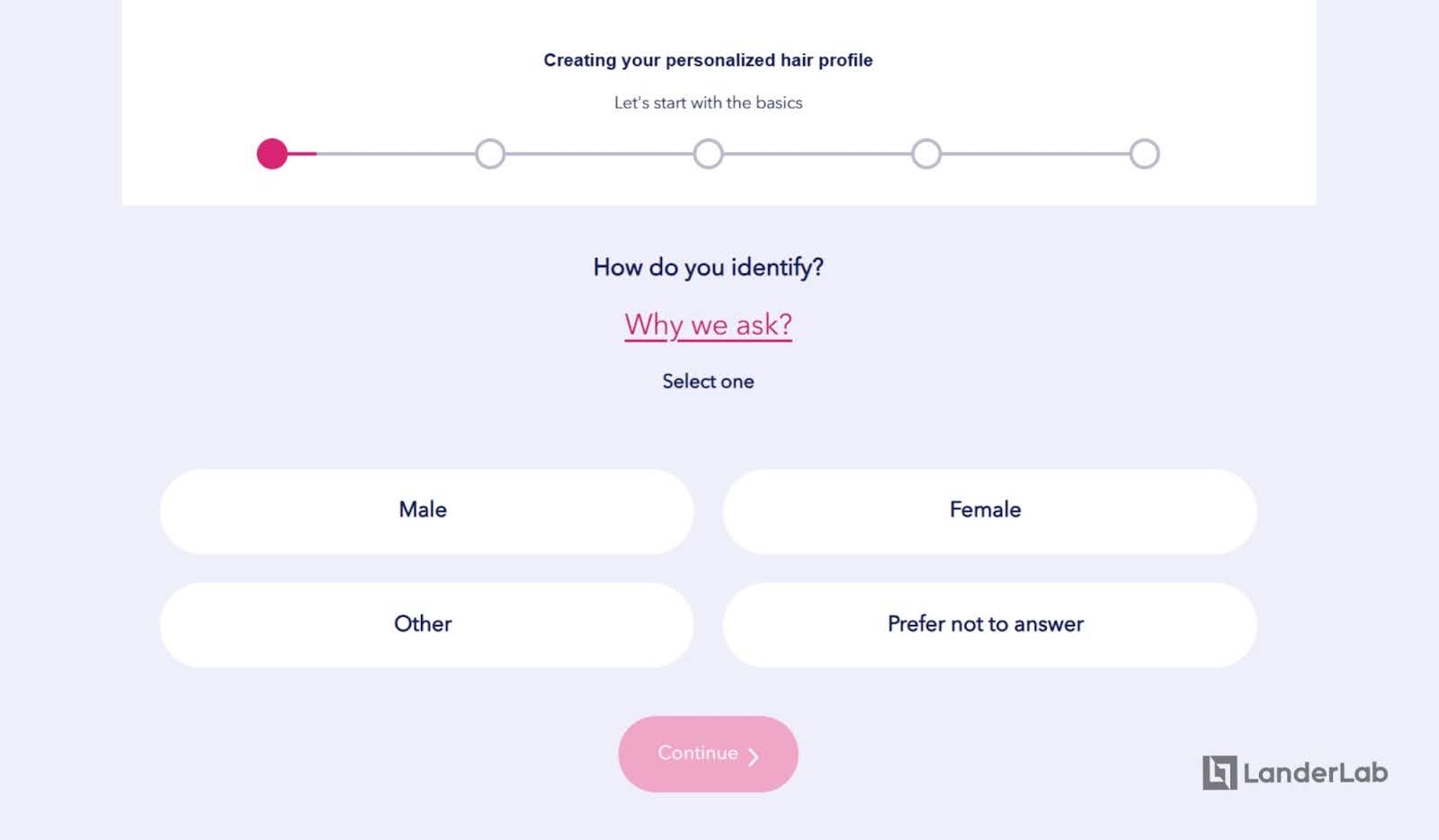
- Complex Solutions: Financial services, custom home design, or enterprise software might require 10-15 questions to properly understand the user’s needs and make meaningful suggestions.
- Technical Knowledge Required: Consider how much explanation your questions need. If each question requires background information for the user to answer accurately, you might need to reduce the total count.
- Quiz Purpose: Comprehensive assessments or detailed personality quizzes naturally require more questions to deliver meaningful results, while simple product recommendations might need fewer.
The Value of the Lead Magnet or Incentive
The perceived value of completing your quiz directly impacts how many questions users will tolerate:
- High-Value Incentives: If completing the quiz unlocks a substantial discount code, exclusive content, or valuable personalized recommendations, users will answer more questions. The psychology of “Why should I tell you this?” is key.
- Low-Value Incentives: For smaller rewards, keep your quiz shorter to maintain a fair value exchange.
- Transparent Value Communication: Clearly explaining the benefit of completing the quiz throughout the experience can maintain engagement during longer assessments.
- Value Proposition: With a compelling enough value proposition, even a 35-question quiz can maintain a 50% completion rate—what matters is making the reward worth the effort.
Your Segmentation Needs and Sales Process Complexity
Your marketing goals should influence quiz length:
- Basic Segmentation: If you only need to sort leads into 2-3 broad categories, fewer questions will suffice.
- Detailed Segmentation: For sophisticated marketing automation with multiple segments and personalized follow-up sequences, you’ll need more data points and therefore more questions.
- Sales Qualification: If your quiz feeds directly into a sales process, you may need specific questions to qualify leads properly. Buyers will pay a premium for better data because it leads to higher close rates and less time wasted on unqualified leads.
- Lead Qualification Thresholds: Some quizzes need specific threshold questions that determine whether a lead is qualified for your product or service—these are essential regardless of overall quiz length.
The Device Most Users Take Your Quiz On
The user’s device significantly impacts the optimal quiz length:
- Mobile Users: For primarily mobile audiences, shorter quizzes with simple question types perform better. Consider that scrolling, typing, and loading can be more cumbersome on mobile devices.
- Desktop Users: Desktop users typically have more patience for longer quizzes and complex question formats.
- Loading Times: Each question adds loading time, especially for media-rich quizzes. Technical performance should be a factor in determining question count.
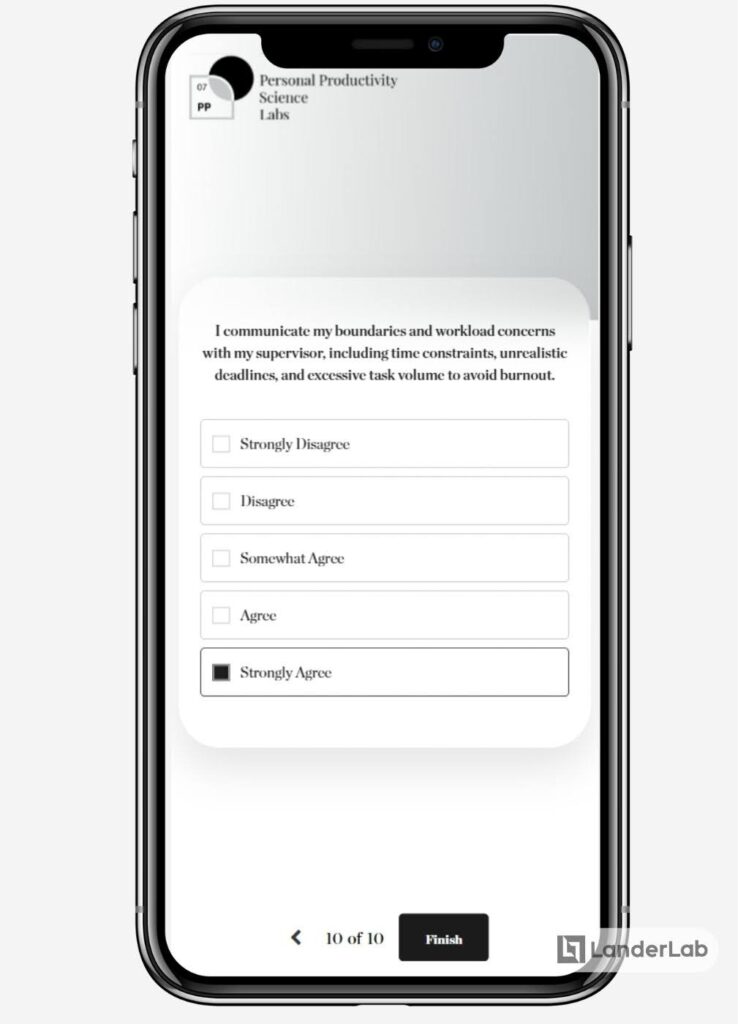
Question Structure and Complexity
The nature of your questions themselves influences how many you can include:
- Quick picks vs. deep thoughts: Simple multiple-choice questions? You can include more of these without boring people. But if you’re asking questions that need serious thinking or typing out answers, keep your total count lower.
- Pictures speak faster than words: Questions with images generally get processed quicker than text-heavy ones. This means you might be able to squeeze in a few more questions if they’re visual.
What really matters isn’t hitting some magic number: it’s creating an experience that makes sense for your specific audience and goals. The psychology behind why people continue taking your quiz matters way more than sticking to a rigid question count.
Bottom line? Focus less on how many questions you’re asking and more on making people actually want to answer them.
Question Types and Their Impact on Quiz Length
The types of questions you include in your quiz can dramatically influence how long it feels to quiz takers, regardless of the actual number of questions.
Not all questions are created equal when it comes to user experience. Understanding how different question formats affect the user experience can help you create a quiz funnel that feels engaging rather than laborious.
1. Multiple-Choice Questions
These are quick to answer and create minimal friction. Multiple-choice questions are ideal for quiz marketing funnels as they require little effort from participants. These questions allow you to include more questions overall without overwhelming participants.
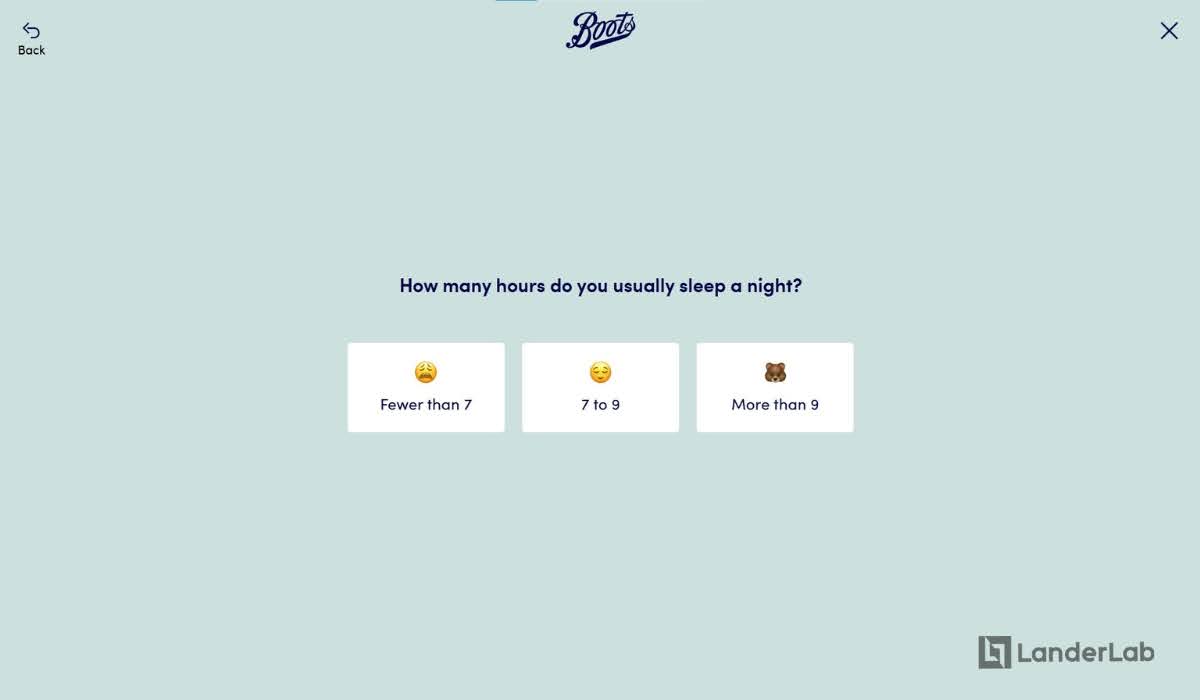
2. Open-Text Questions
These require more thought and typing, significantly increasing the perceived length of your quiz. It’s best to avoid using too many of these as they can feel less like an engaging quiz and more like a tedious survey.
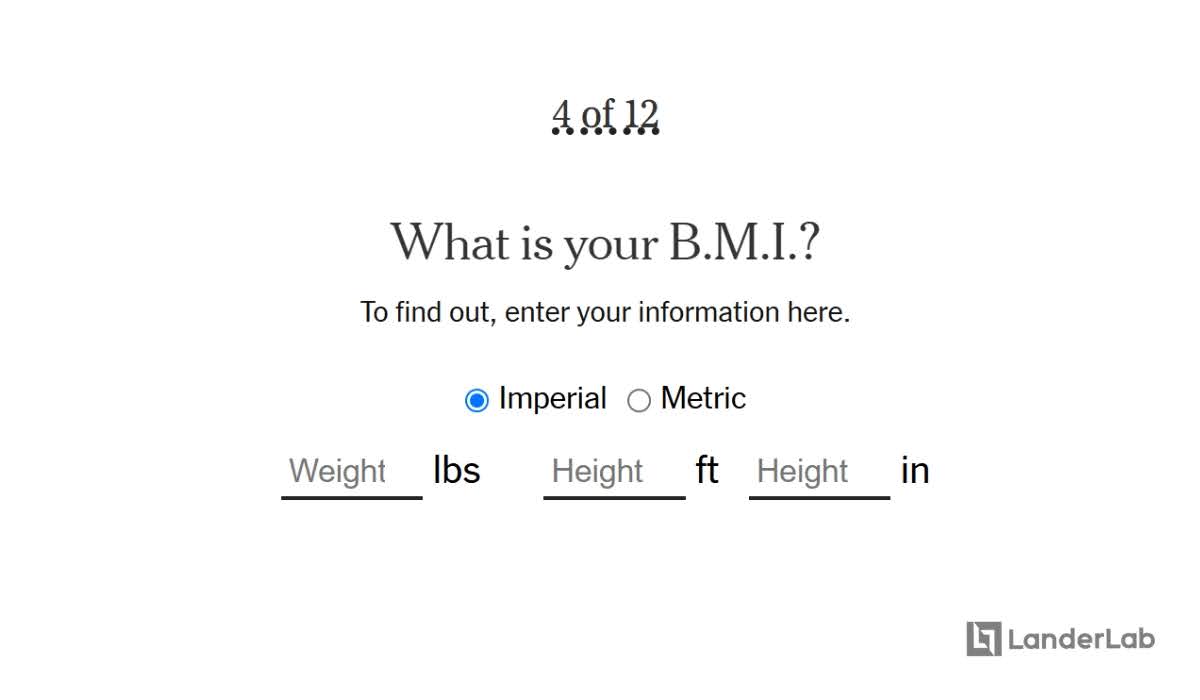
3. Scale or Rating Questions
These questions (like “Rate your comfort level from 1-5”) are also relatively quick to answer. Scale questions are incredibly valuable as they’re easy to answer while providing rich insights about your leads.
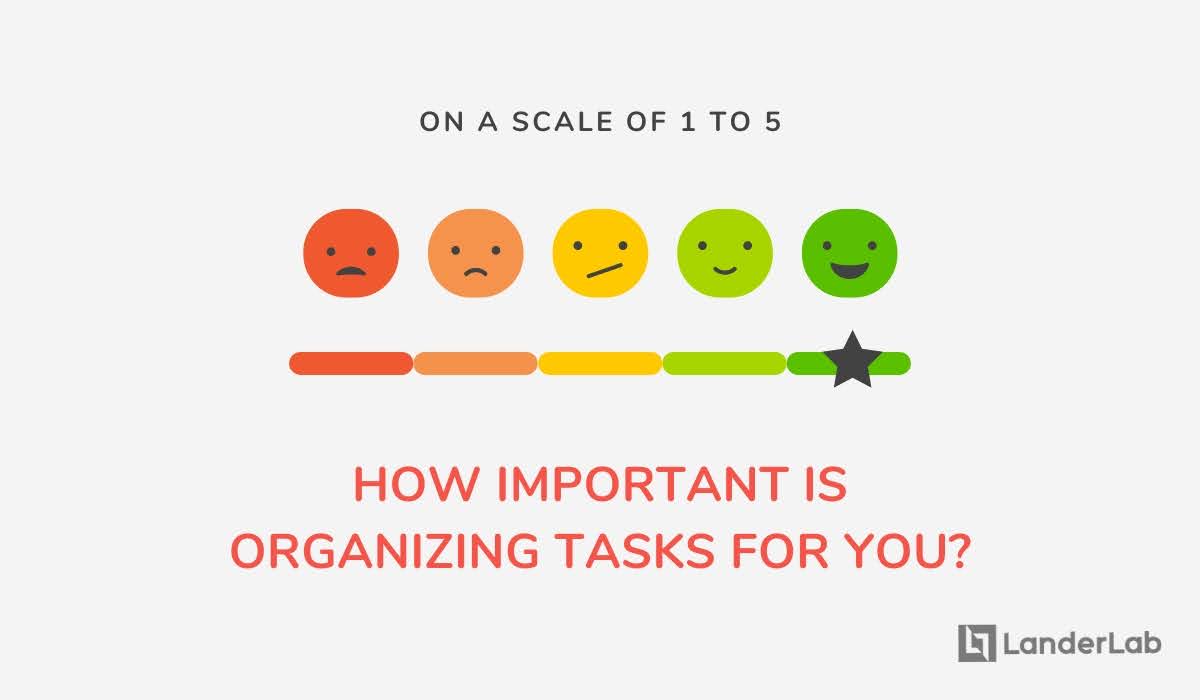
4. Complex Decision Questions
Questions that require significant deliberation (like budget questions or technical specifications) make a quiz feel longer. These challenge questions make visitors stop and think carefully about their answers.
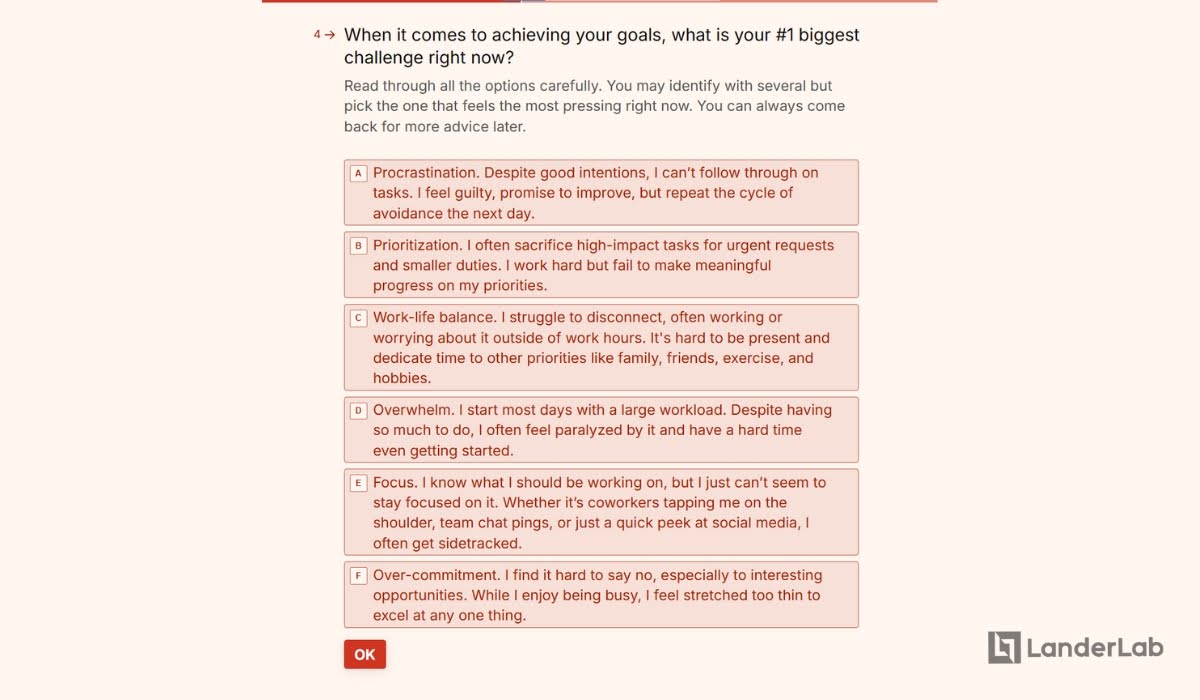
5. Visual Questions
Questions with images or videos can actually make your quiz feel shorter despite taking longer to load, as they break up text and make the experience more engaging.
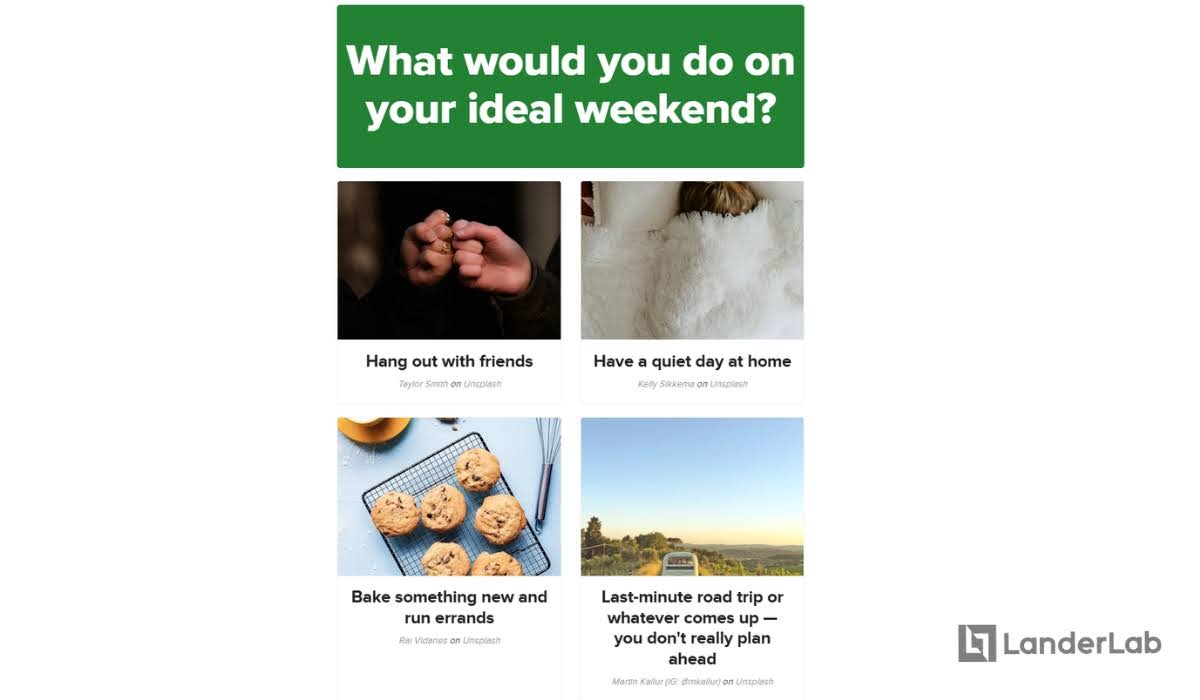
The key insight is that perceived length matters more than actual question count. A 15-question quiz with simple multiple-choice questions might feel shorter than an 8-question quiz with complex, open-ended responses.
Best Practices to Increase Engagement for Any Quiz Length
Regardless of how many questions your quiz contains, certain best practices can dramatically improve completion rates and user experience. These strategies help maintain engagement and provide value throughout the quiz journey.
1. Mixing Question Formats to Maintain Engagement
Variety is crucial for maintaining engagement throughout your quiz. Here’s how to add variety to your quiz funnel:
- Start with Easy Questions: Begin with light questions that are quick, easy and fun to answer. This builds momentum and investment in the process.
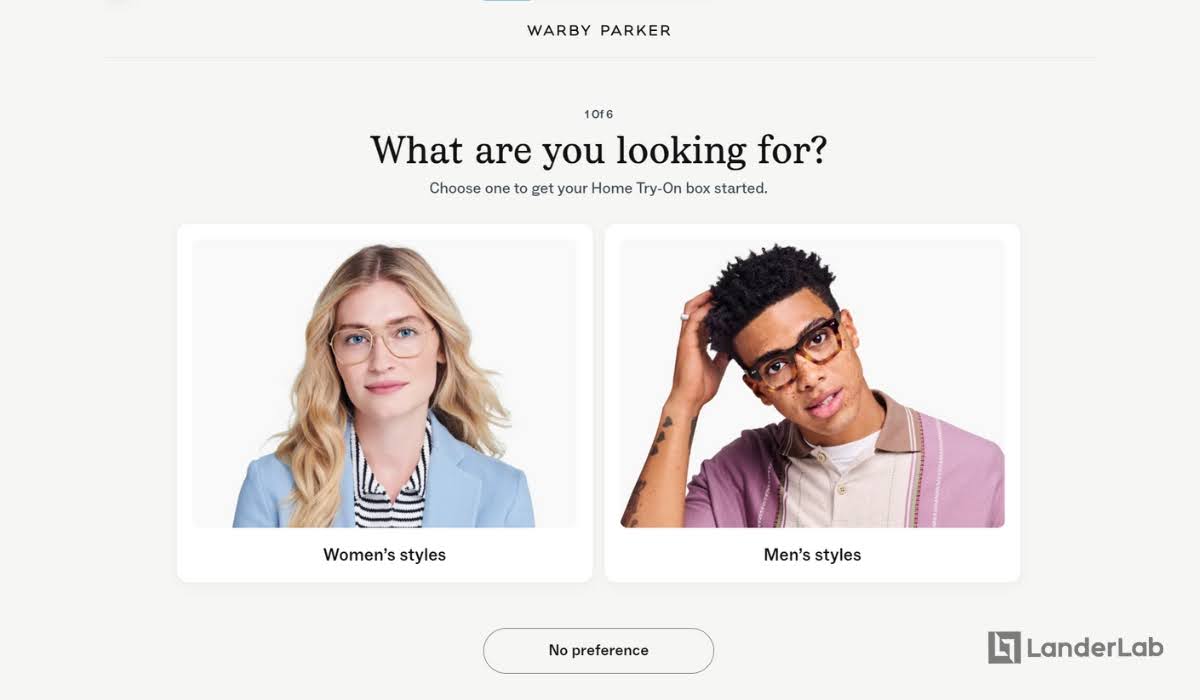
- Mix Question Types: Alternate between different formats to keep the experience fresh. The key to an effective online quiz is maintaining attention all the way to the end. Using the same question format repeatedly can lead to boredom.
- Balance Effort Levels: Follow a more demanding question with a simple one to give participants a mental break.
Every question is either building momentum or killing it. The right mix of question types creates a rhythm that keeps participants moving forward.
2. Strategic Placement of Critical Questions
Not all questions in your quiz hold equal importance. Strategic placement of your most critical questions can improve completion rates while still gathering essential information:
- Front-Load Engagement Questions: Put fun, engaging questions at the beginning to build investment in the process.
- Middle-Load Critical Questions: Place your most important qualification or segmentation questions in the middle of the quiz, when the user is already committed but not yet experiencing fatigue.
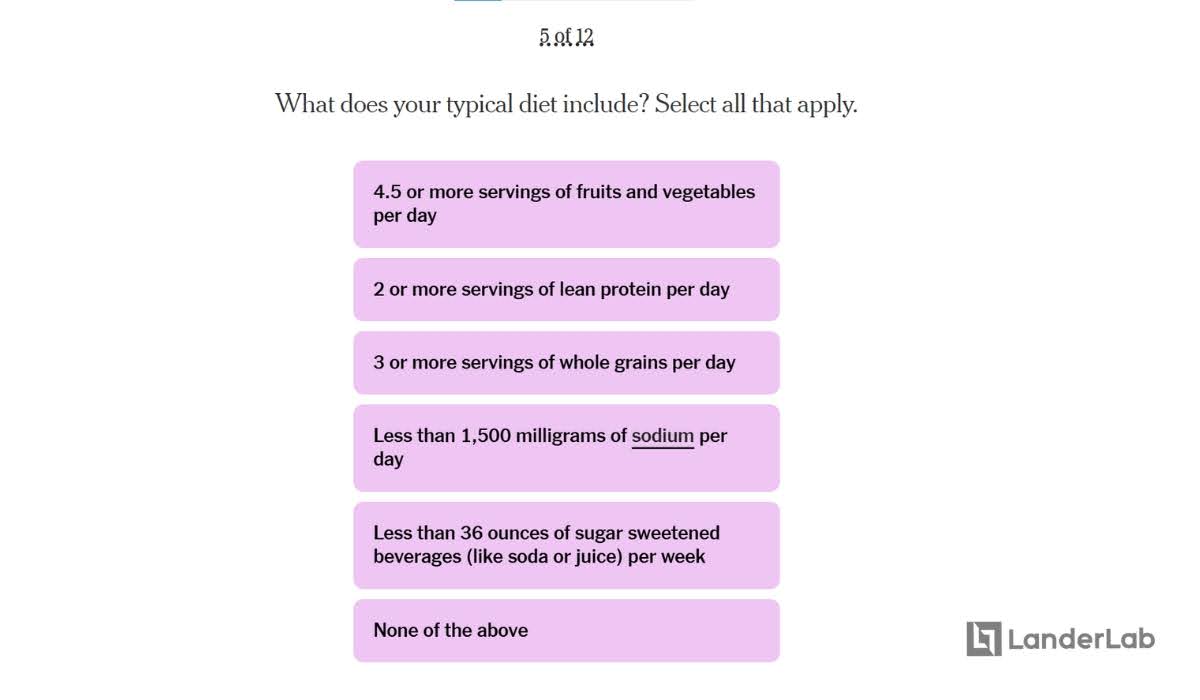
- Back-Load Sensitive Questions: Save more personal or potentially uncomfortable questions (like budget or contact information) for later in the quiz when the user is invested in seeing their results.
- Sandwich Technique: Try sandwiching tough questions between momentum-builders and drop encouragement at key points. For example, following a difficult question with encouraging feedback like “Many others have overcome exactly this challenge” keeps participants engaged.
Turns out, how you arrange your questions matters more than how many you ask. A thoughtfully arranged 12-question quiz often outperforms a jumbled 8-question quiz.
When you carefully map out which questions go where, something interesting happens. People flow through your quiz without feeling like they’re doing work. Meanwhile, you’re gathering exactly what you need to group customers properly and offer them personalized recommendations.
It’s like a good conversation: when the questions build naturally, people hardly notice how many they’ve answered.
3. Using Progress Indicators
One of the simplest yet most effective ways to improve quiz completion rates is to show participants exactly where they stand in the process:
- Visual Progress Bars: A simple graphic showing percentage completed gives participants a clear sense of how far they’ve come and how much remains.
- Numerical Indicators: Showing “Question 3 of 8” or similar metrics helps set expectations about the time commitment required.
- Milestone Markers: For longer quizzes, marking key sections (like “Almost there!” or “Final section”) provides psychological boosts at crucial moments.
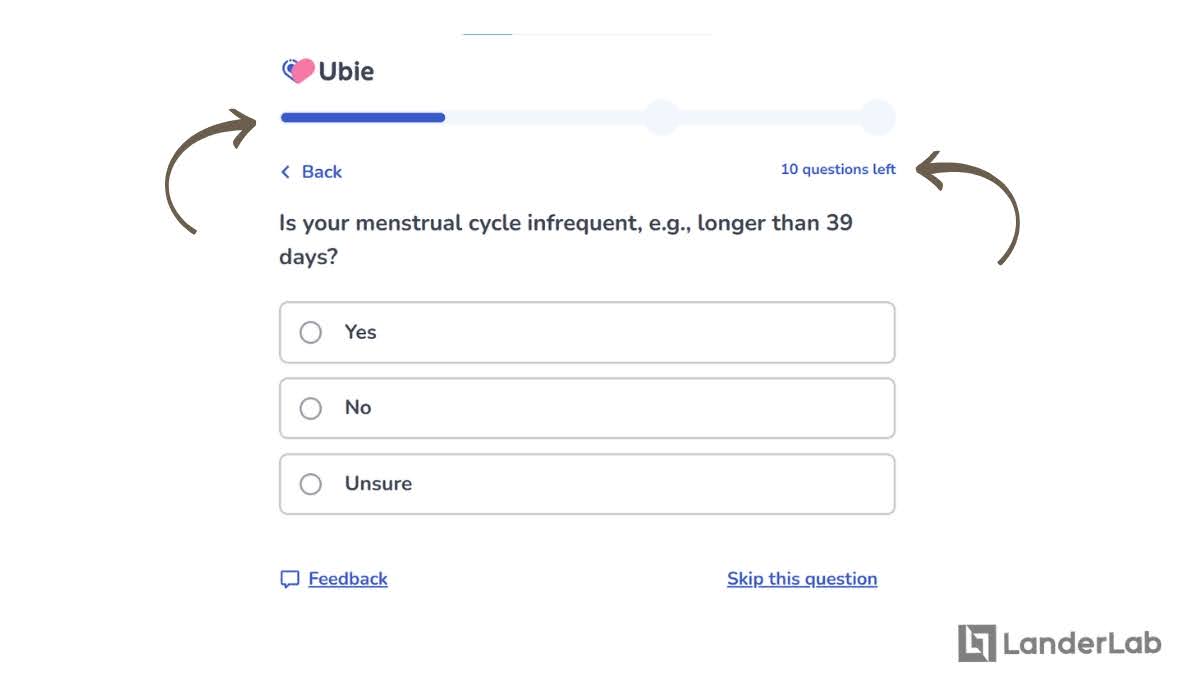
Making progress visible is one of the key factors in successful quiz funnel design. When participants can see their progress, they’re less likely to abandon the quiz partway through, even if it contains more questions than average.
4. Breaking Longer Quizzes into Logical Sections
If your quiz needs to be on the longer side, organizing it into clear sections can make it feel more manageable:
- Thematic Grouping: Cluster related questions together (e.g., “About Your Style,” “About Your Budget”).
- Page Breaks: Instead of presenting all questions on a single scrolling page, break the quiz into multiple pages with clear transitions.
- Context Setting: Briefly explain the purpose of each section before diving into questions (e.g., “Now let’s talk about your goals so we can tailor our recommendations”).
Even a 15-question quiz can feel approachable when broken into three sections of five questions each. Proper structure is what allows even lengthy quizzes to maintain good completion rates.
5. Maintaining Relevance Throughout the Quiz
Every question should feel purposeful and connected to the promised outcome:
- Eliminate Filler Questions: If a question doesn’t help with segmentation or personalization, remove it. The best approach is to scatter challenging questions throughout your quiz to maintain variety and engagement.
- Show Incremental Value: Provide mini-insights throughout the quiz rather than saving all value for the end. Consider adding images or GIFs to make your quiz more visually engaging.

- Explain Why You’re Asking: Brief explanations like “This helps us customize your plan” can increase willingness to answer.
- Personalize Question Flow: If possible, adapt subsequent quiz answers based on previous answers to maintain relevance.
The most successful quiz funnel is one where every question feels relevant to the participant. This relevance can allow for more questions while maintaining engagement.
6. Making Every Question Count Toward Segmentation
Make your quiz length efficient by ensuring each question serves a strategic purpose:
- Segmentation Questions: Identify the key questions that will sort users into your marketing segments. These essential “bucket questions” determine where your visitor will ultimately land.
- Qualification Questions: Include discovery questions that identify your target customers and their readiness to buy, helping you decide who would make a great potential customer and who might not.
- Personalization Data: Collect lead information that allows you to customize follow-up marketing. Your emails will speak directly to their problems when you’ve collected the right customer data.
- Dual-Purpose Questions: Design questions that both engage the user and provide valuable data. For example, a fun personality-based question might also reveal key information about preferences.
The most efficient quizzes make every question work double-duty—providing value to both the participant and your marketing efforts.
By implementing these best practices, you can create a quiz that feels engaging and valuable regardless of its length. In fact, a longer quiz type that follows these principles may outperform a shorter quiz that ignores them.
7. Integrate Lead Capture at the End
The timing of your lead capture form is crucial for maximizing conversion rates in your quiz marketing strategy:
- Explain the Value Exchange: Clearly communicate why you need their email address (“To send your personalized results” or “To provide your custom recommendation”). This transparency increases conversion rates.
- Keep It Simple: Request only essential information at this stage. In most cases, just an email address is sufficient—additional fields can be collected later in your marketing process.
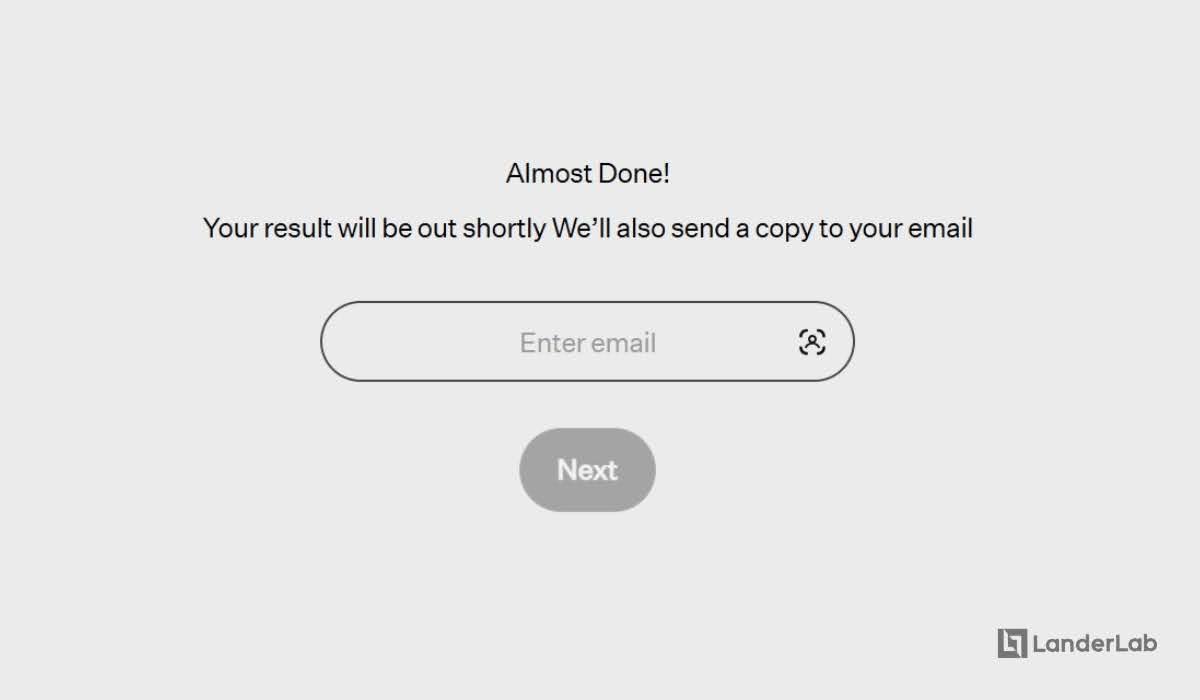
- Offer Options: Consider providing limited results for those who don’t want to share contact information, while reserving full, personalized insights for those who do. This tiered approach respects user preferences while incentivizing lead capture.
The end of your quiz is the perfect moment to request contact information because users are invested and eager to see their results. Strategically placed lead capture forms can convert at rates 3-5 times higher than standard website opt-in forms when users understand the value they’ll receive.
Real-Life Long and Short Quiz Funnel Examples
Let’s examine some real-world amazing quiz funnel examples that demonstrate the principles we’ve discussed.
These examples from actual companies show how different approaches to quiz length can be effective for different brands and purposes.
Act+Acre’s Adaptive Hair Quiz (8-14 Questions)
Act+Acre offers a “2-minute trichologist-developed quiz” designed to discover the best products for your scalp and hair needs.
What makes this quiz interesting is its adaptive nature—depending on how you answer the initial questions, the total number of questions can range from 8 to 14.
The quiz covers areas like:
- Hair texture and density
- Scalp conditions
- Current hair care routine
- Specific hair concerns
- Environmental factors
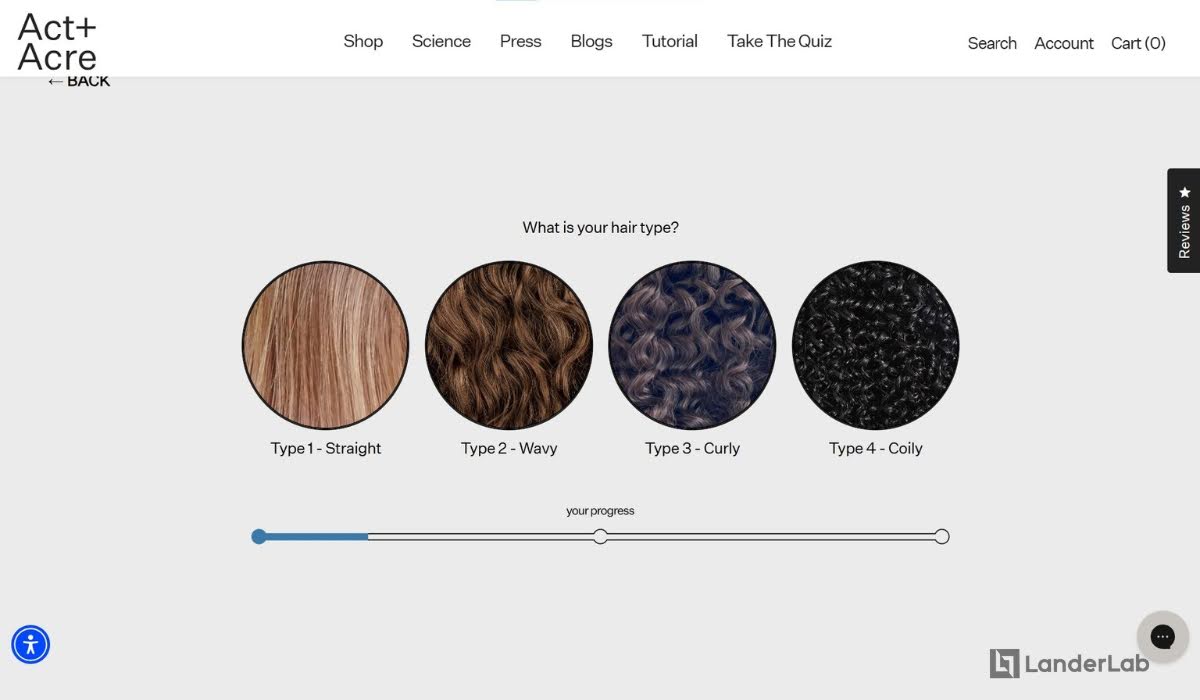
At the conclusion, Act+Acre asks for the user’s email address to deliver the quiz results and offer a 15% discount on their first order of the recommended products. This approach accomplishes several goals:
- Demonstrates expertise (trichologist-developed)
- Provides clear value (personalized recommendations)
- Offers immediate incentive (15% discount)
- Builds their email list for future marketing
The adaptive questioning format means users only answer questions relevant to their situation, creating a more efficient experience that feels personalized rather than generic.
Boots’ Comprehensive Vitamins Quiz (20-40 Questions)
On the opposite end of the spectrum, Boots offers a vitamins recommendation quiz that can include a whopping 20 to 40 questions, depending on your responses.
The quiz is separate from the main content and has its own landing page, which allows quiz takers to focus on answering the quiz funnel questions.
What’s notable about this extensive quiz is how they manage user expectations and permissions:
- They offer users a choice between a 3-minute and a 6-minute version of the quiz
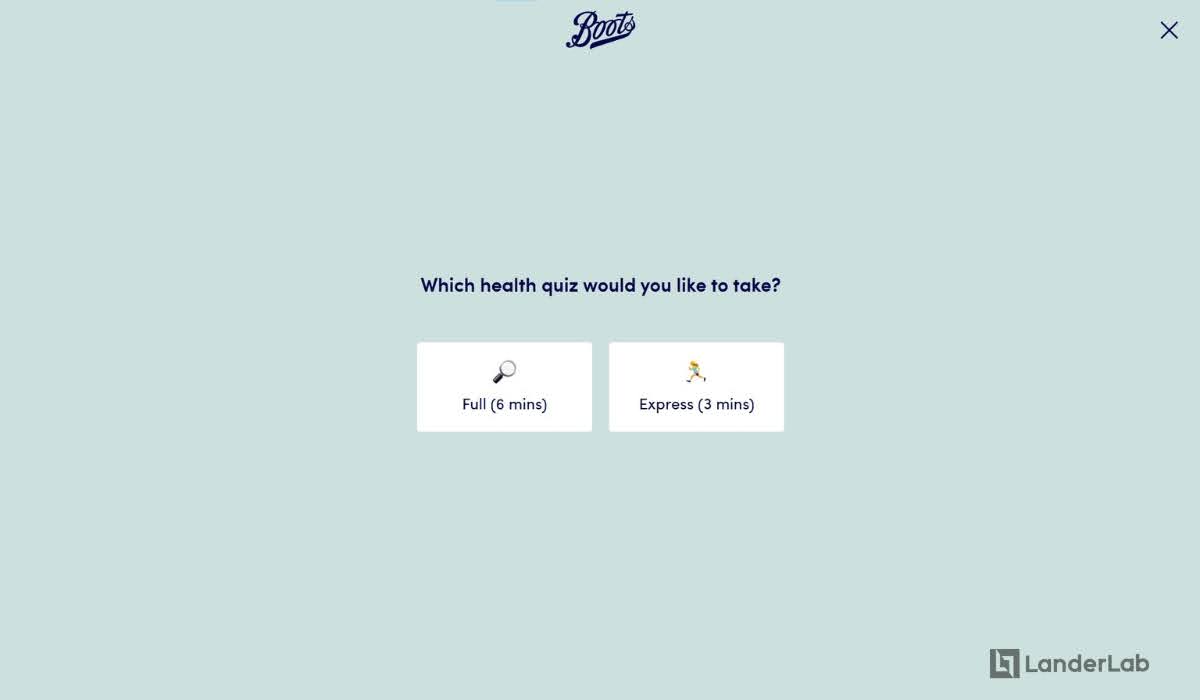
- They explicitly ask for permission to inquire about medical history to provide better recommendations
- Questions adapt based on previous answers, creating a branching path through the quiz
One significant drawback of this approach is the lack of progress indicators. Without a progress bar or question counter, users have no way of knowing how many more questions remain, which can create fatigue and potential abandonment.
Despite its length, the quiz succeeds because:
- It establishes trust by explaining why personal health questions are valuable information and are necessary
- It gives users control through the choice of quiz length
- The high-value outcome (personalized health recommendations) justifies the time investment
- The brand provides a personalized offer that’s integrated in the results page
Warby Parker’s Visual Eyewear Quiz (6 Questions)
In contrast to the previous examples, Warby Parker takes a minimalist approach with their eyewear quiz, asking just 6 questions.
What makes this quiz of this ecommerce brand particularly effective is its heavy reliance on visual elements:
- Face shape selection using images
- Frame preference through visual examples
- Color preferences shown through actual frame options
- Width preferences illustrated with visual guides

By using images rather than text-heavy questions, Warby Parker creates a quiz that feels quick and engaging despite collecting significant preference data. This approach works well because:
- Eyewear selection is inherently visual
- Their target audience values simplicity and style
- The multiple-choice, image-based format reduces friction
- The quiz mirrors the in-store experience of trying different frames
Implement These Insights in Your Own Quiz Funnel
The question of how many questions your quiz funnel should have doesn’t have a universal answer.
What works for one business, audience, or quiz type won’t necessarily work for another. The insights we’ve explored reveal that success lies in understanding the unique dynamics of your specific situation.
The goal isn’t to find the “correct” number of questions, but to create the most effective quiz experience for your specific business goals and audience needs.
Stop obsessing about question count. Start obsessing about: Question framing, Value demonstration, Psychological momentum. These can increase the chances of success of this lead generation funnel.
At the end of the day, it’s not about how many questions you ask—it’s about making people want to answer them.



